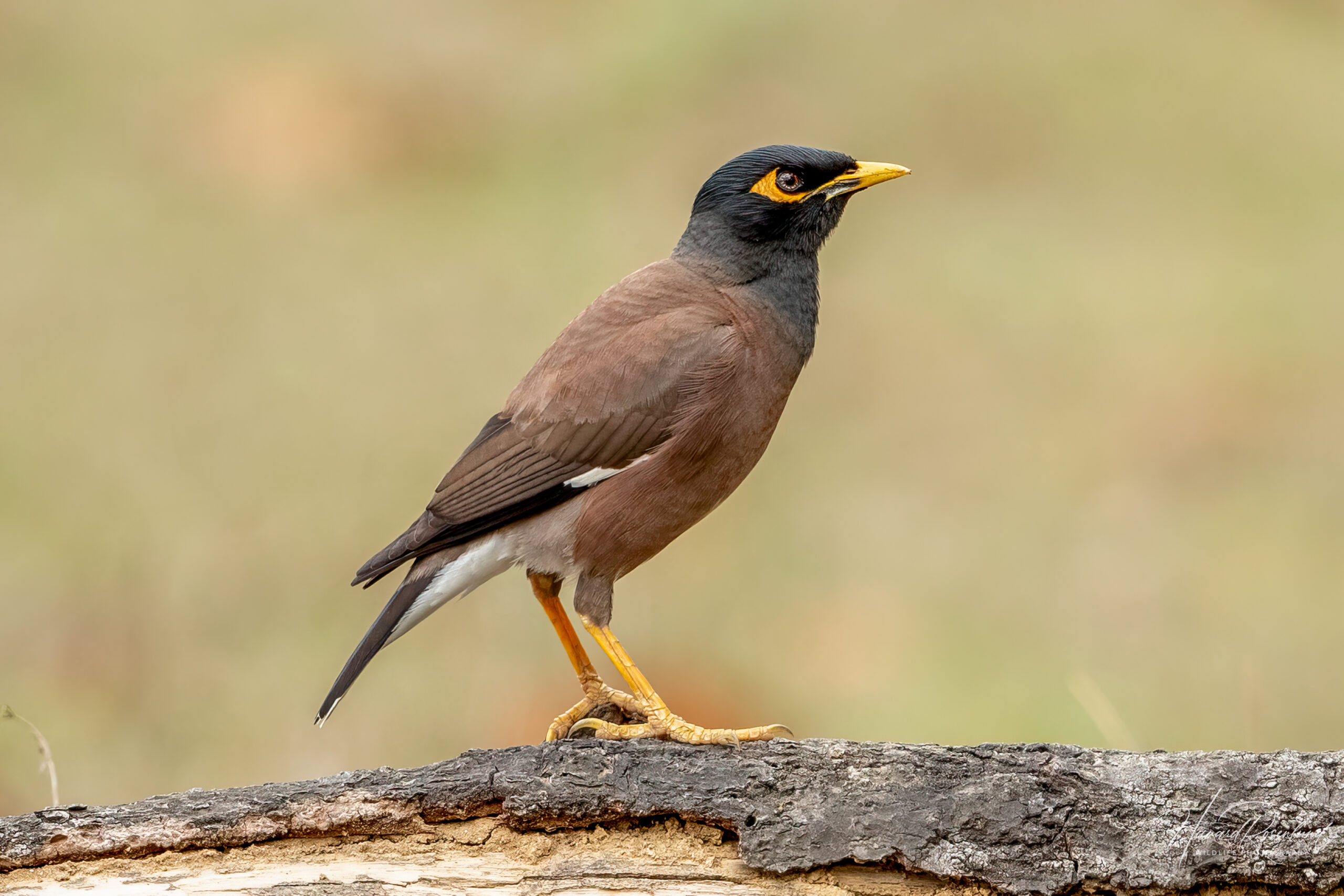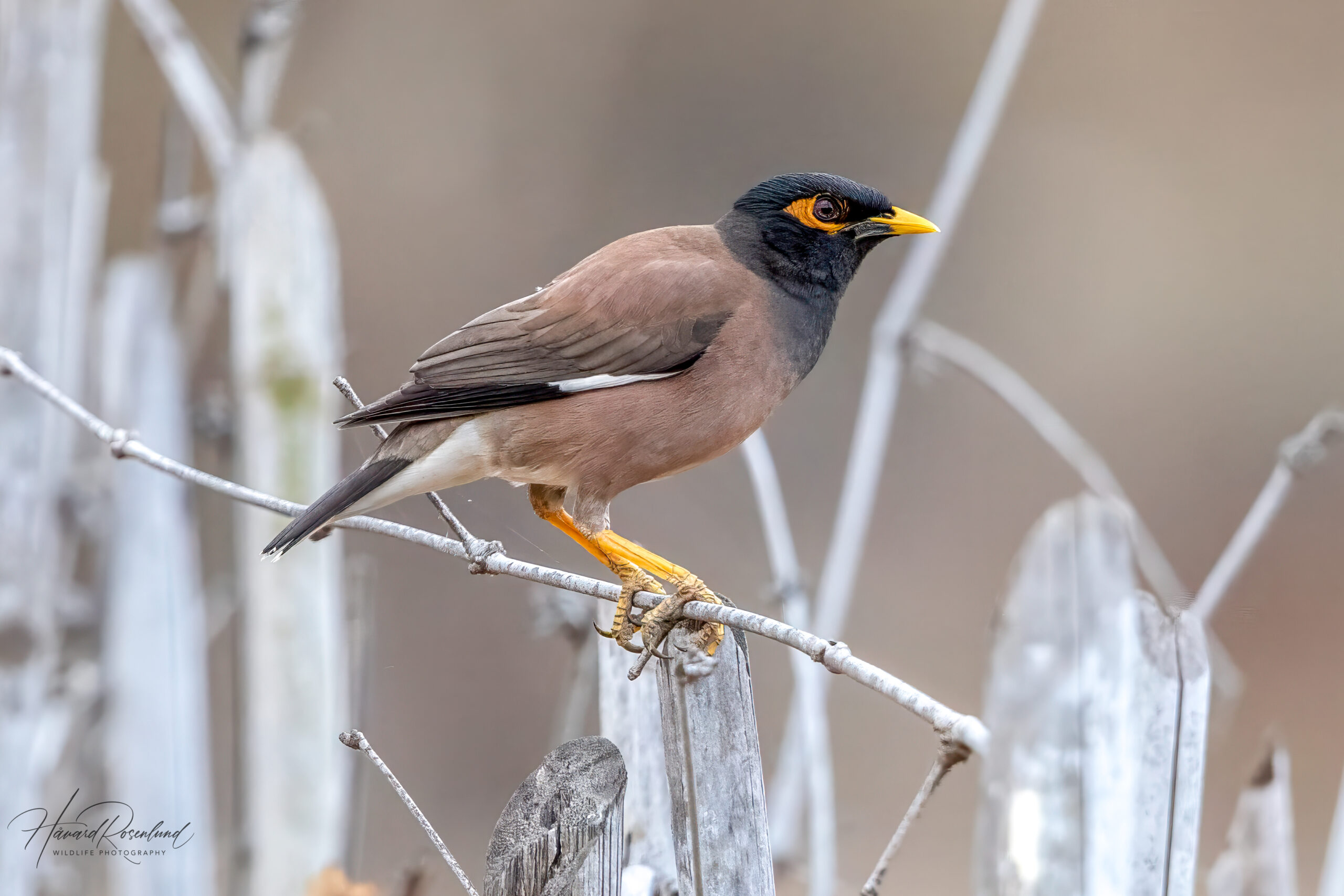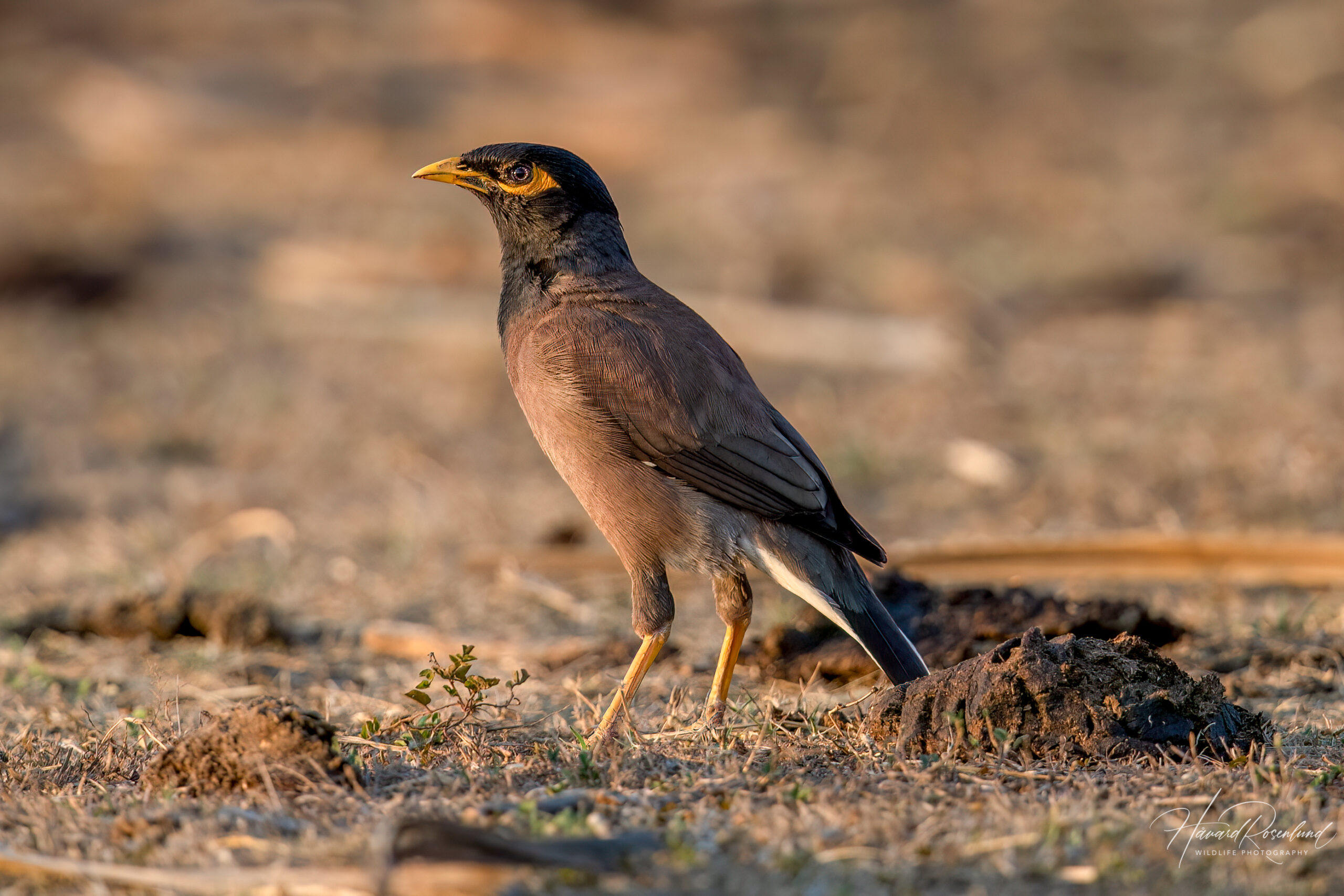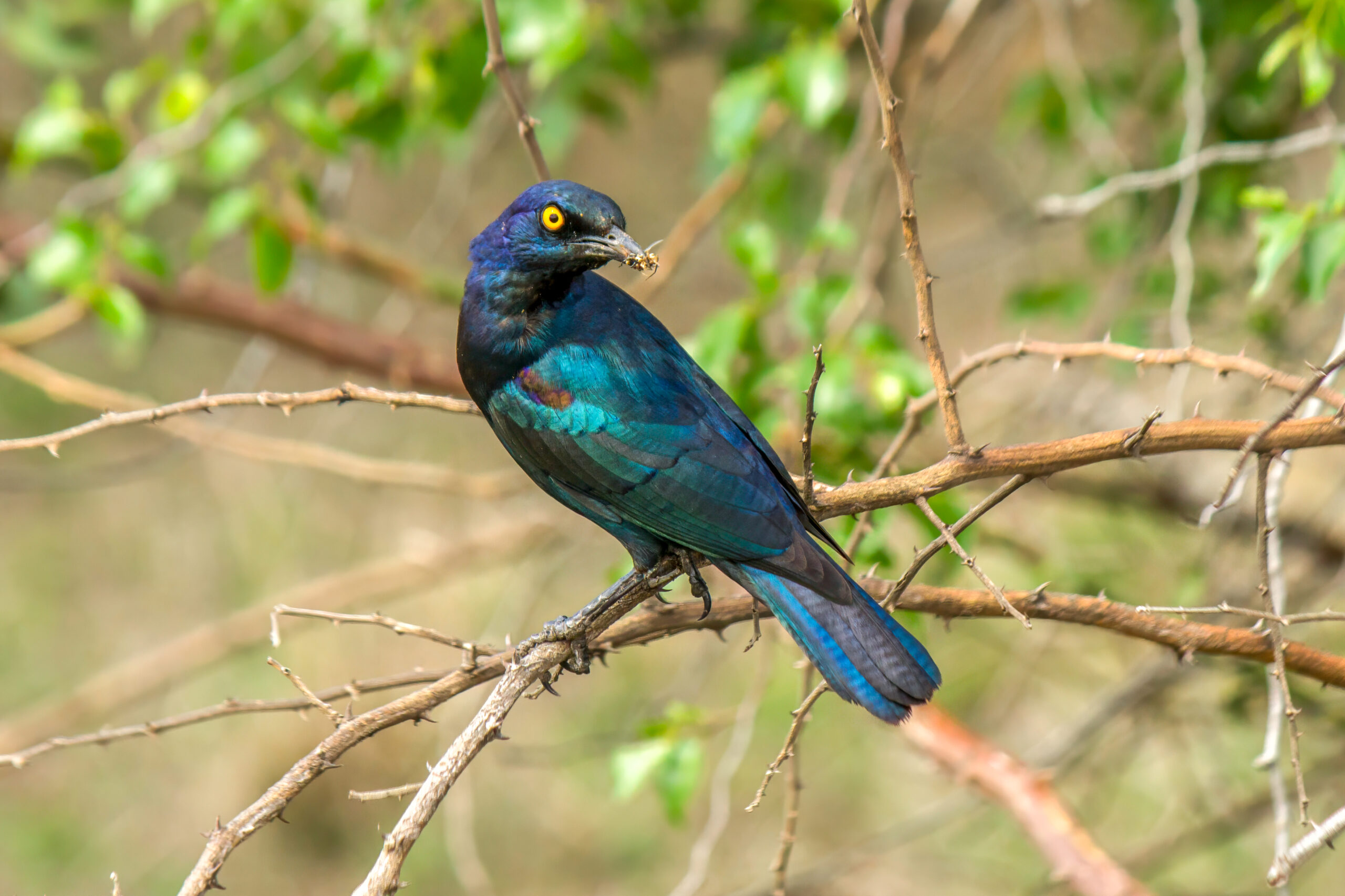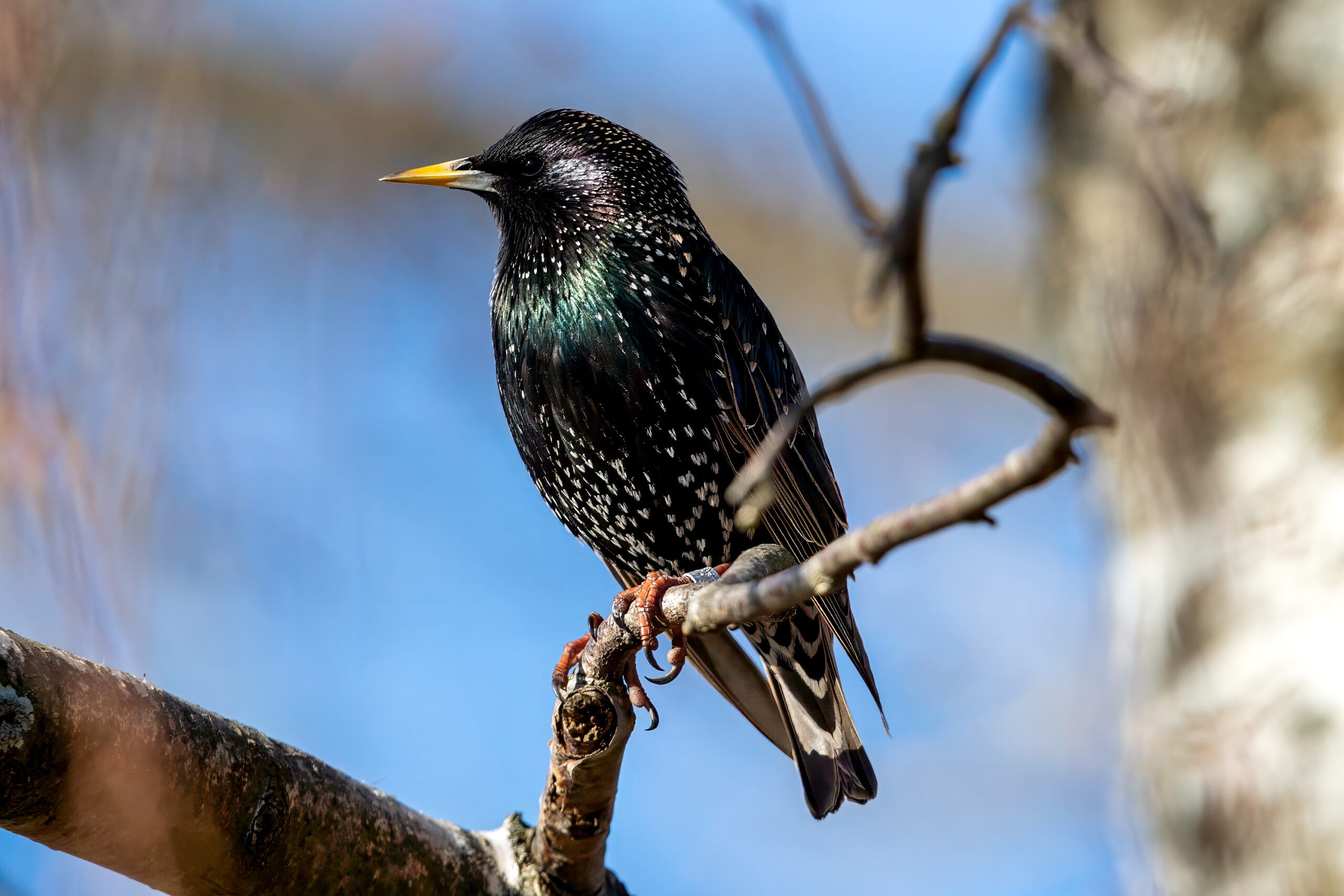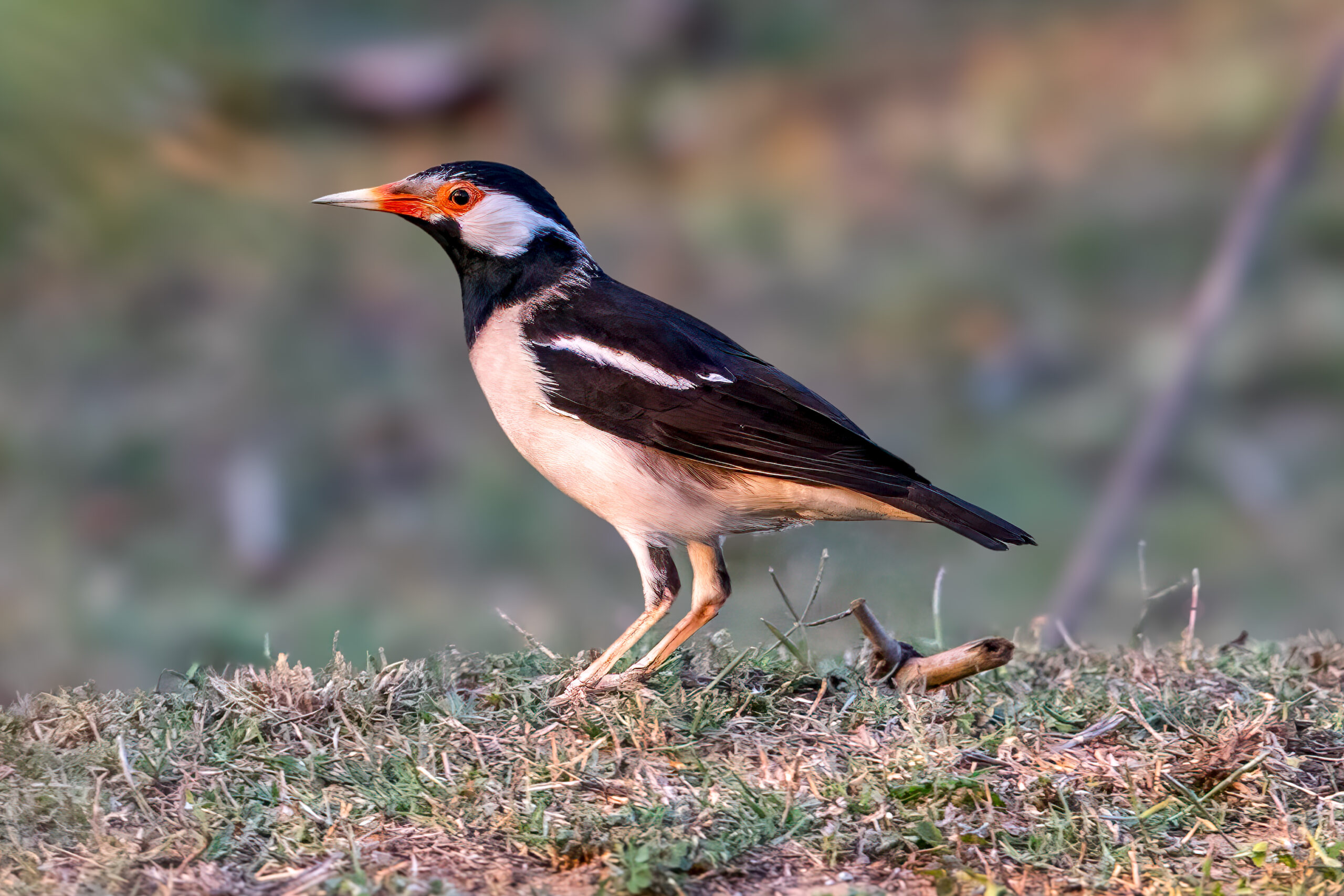Description
The common myna (Acridotheres tristis) is a species of starling native to South and Southeast Asia, easily recognizable by its brown body, black head, and yellow patches behind the eyes. It measures about 23-26 cm (9.0-10.2 in) in length and features a distinctive yellow beak and legs. This bird can be confused with the slightly larger bank myna (Acridotheres ginginianus), which has a darker yellow to orange beak and eye patch, and a more greyish plumage. The common myna has adapted well to urban environments and is known for its loud and varied calls, as well as a remarkable ability to mimic sounds, including human speech. It has been introduced in many other parts of the world, where it has established breeding populations.
Diet & habitat
Common mynas thrive in a variety of habitats, including urban areas, open woodlands, and cultivated lands. Their adaptability to different environments is a key factor in their widespread distribution. These birds are omnivores, feeding on insects, fruits, and human scraps, showing a particular fondness for sugary foods. Their feeding behavior is opportunistic and they often forage on the ground in pairs or small groups. In urban areas, these birds are often seen using tools, such as using car traffic to crack nuts.
Social behavior
Common mynas are highly social and communicative birds, known for their complex interactions. They often form large communal roosts, sometimes comprising hundreds of individuals, especially in urban areas. These roosts serve as centers for social interaction and information exchange. Mynas are also observed engaging in cooperative behaviors, such as joint territory defense and collective mobbing of predators. Their vocalizations play a crucial role in social dynamics, used not only for communication but also for establishing social hierarchies within groups.
Nesting
The breeding season of the common myna varies depending on the region but generally occurs during warmer months. These birds are monogamous and exhibit elaborate courtship displays, including song duets and mutual preening. They nest in a variety of locations, often utilizing natural cavities, buildings, or even abandoned nests of other birds. The female typically lays 3-5 eggs, which are incubated for about 13-14 days. Fledging occurs approximately 22-24 days after hatching, with both parents actively involved in feeding and caring for the young.
Introduced populations
The common myna has been introduced to numerous countries including Australia, New Zealand, South Africa, and various islands in the Pacific and Indian Oceans, including Hawaii. These introductions often occurred in the 19th century, with the birds being brought in for pest control or as pets. However, they have since become an invasive pest themselves in many of these regions, outcompeting native species for resources and nesting sites.
Status
Due to the wide distribution and large population of common myna, it is listed as least concern on the IUCN Red List . However, its status as an invasive species in introduced regions has prompted control measures. In some areas, its impact on native wildlife and ecosystems has been significant, leading to its listing among the world’s worst invasive species.




